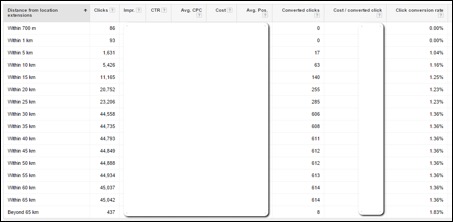Calculate Your Research Online Purchase Offline (ROPO) Conversion Rate

One of the biggest challenges facing digital marketers is how to measure research online purchase offline, otherwise known as ROPO, for those who have both an e-commerce website and a physical store location.
I’m sure the majority of us do it regularly. We browse numerous retailers online before heading in store to make the purchase, especially for those expensive items. At Wolfgang Digital, we believe that for every transaction made online, multiple transactions are made in store by those who have browsed online and then decided to purchase in store. Frustratingly, these in-store transactions are usually invisible to digital marketers. In this post, we will examine AdWords and Analytics data already available to you that could help you get an estimate of the value of in-store sales that started online.
If you have a large percentage of customers that use a loyalty card in store and they are also logged into your site when browsing, you can use the User ID function through Google Analytics to accurately track both cross-device purchases and in-store purchases. You can read more about this on our blog.
For the majority of businesses, the User ID solution is a non-runner. However, from the data that we have available to us within both Google AdWords and Google Analytics, there are a number of items that could indicate that ROPO is impacting your business.
1) Clicks To Call
Within the AdWords interface, we have the ability to view the number of users who click on the call button when the ad is shown on a mobile device. It may be someone calling the store to check opening hours or if they carried out a product specific search to see if it is in stock.
2) Clicks To Get Directions/Location Details
Also from within the AdWords interface, you can see how many users clicked to get directions/location details. Again, this metric is a strong indicator that the searcher is looking to visit the store.

3) Distance From Location Extension
This report is also available in the AdWords interface under the dimensions tab. From here, select distance from the drop down menu. The screenshot below shows how this report looks. From the example shown we can see that no clicks from within 1km of the store location converted. These clicks were likely to be users searching for the opening hours.
As the distance gets further away from the store location the conversion rate increases (with the exception of within 15km which is higher than the next two distances). The distance that had the highest conversion rate was beyond 65km. This data indicates that ROPO is impacting conversion rates as it steadily increases the further away users are to the store location.

4) Exited Site On/Viewed Store Location/Opening Hours Page
Seeing how many users exited your site on the page which holds your store location and opening hours information can always be a good indicator of a user possibly visiting your store. For this example, we decided to look at data from a site that had their last Christmas delivery date on December 19th. Within analytics we can see that there were 33% more pageviews of the store location and opening hours page between December 19th – 23rd compared to the previous 5 day period. To us, this is a clear indication of ROPO as the users were no longer guaranteed delivery before Christmas so they viewed the store location and opening hours pages and possibly went to the store to purchase.
5) Analytics Conversion Rate By Distance To Store
We can also examine data within the geo report in Google Analytics to try and determine if ROPO is impacting your business. We took sample data from one of our client’s accounts who have multiple stores around the country. We took the top 30 locations in terms of sessions and grouped them into 7 different groups based on how far away that location was from a physical store. We then calculated the conversion rate for each of these 7 different groups. The results show us that the conversion rate seems to increase the further away from the store that the location is.
Only in one instance does the conversion rate drop when the location gets further away from the store and even in this case it is a marginal drop. Apart from that one drop it consistently increases as the location gets further away from the physical store. The total website conversion rate for the website during this time period was 1.63%. The conversion rate almost trebled to 4.07% when the user was over 150km from the store.

So let’s use this data to put a figure on our research online purchase offline conversion rate.
Estimating ROPO
So let’s call the 150km plus conversion rate our “online only” conversion rate. These people are so far away from a store it’s highly unlikely they are travelling to the store to make a purchase. So we can infer that when people can’t transact in-store they convert online at 4.07%.
At the other end of the spectrum, we have a 1.41% “online” conversion rate from customers who live within 10kms of a store. We can expect the incidence of ROPO to be a lot higher here. To estimate what that ROPO conversion rate is let’s take our “online only” conversion rate of 4.07% and subtract our <10km “online” conversion rate or 1.41% to leave 2.66% as our estimated “ROPO” conversion rate for people living within 10km of a store.
This is a remarkable figure as it almost trebles our conversion rate for the majority of our traffic which happens close to the store. Suggesting that for this retailer for every sale they make online to their <10km traffic they make a further 2 in-store.
Of course, there are limitations to this calculation and it can only provide an estimate. But for now, it’s a great way for search market to demonstrate the invisible value of their hard work.



